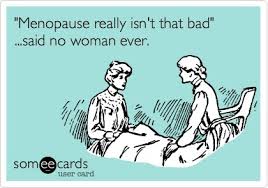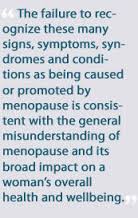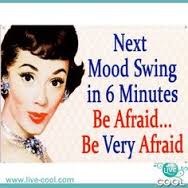Overtime, this blog has focussed on writing-related topics, but not today. Today I’m venturing into a quite different area although, I expect normal service to resume shortly. So if for any reason, you’re not interested in reading about menopause, look away now.
If you’re still with me, make yourself comfortable. But perhaps from a safe distance – I could get loud.
Menopause rarely rates a mention in the media, it’s not a ‘sexy’, topic, unlike say, Miley Cyrus and whether she’s moved on from twerking and entered the sexual terrain of S&M a la Fifty Shades of Grey (yawn). However, link menopause to cancer and that’s different, especially if you can run a headline that screams – ‘ Women on HRT face increased risk of Ovarian Cancer’. Or, as in the case of last Saturday’s SBS evening news, a whole item devoted to the fact that one extra woman in every 1000 has an increased risk of developing ovarian cancer, if you’re over 50 and have been on HRT for more than 5 years. Granted, I don’t want to be the one extra woman, but I’m happy to take my chances in the lottery with the other 999 women.
I am in no way suggesting that this shouldn’t have been made public via the news or that women shouldn’t have such facts available to them when weighing the pros and cons of taking HRT. It’s the method of reporting, particularly the stereotyping of what it is to have menopause. Or not even using the word menopause in the entire report.
Whilst I have to accept I was sucked in by the screaming headline, the words ‘slight risk’ were not added until the actual report was introduced. Let’s open with the learned Professor talking studies, statistics and nodding knowledgeably. He of course also repeated the known fact that HRT is also linked to Breast Cancer, but didn’t mention that it’s also been linked to a decrease in heart disease.
Next cut to Bryher (real name). Bryher is a woman in her 60’s the male voice over tells us and goes on to say in astonished tones, that she has so much energy because of HRT she’s even started her own business. Fancy that, a woman in her 60’s starting her own business. Bryher was a very articulate woman and spoke positively of the relief from night sweats, hot flushes and her renewed energy since taking HRT.
Then cut to a radio studio where a male presenter was reading out a text from a listener who – ‘threw the packet in the bin and toughed it out.’
I don’t happen to be British and don’t share that ‘ we’ll fight them on the beaches’, stiff upper lip stoicism. In fact, when dealing with my own perimenopausal symptoms, my upper lip was quivering, jelly-like, and as for toughing it out – that was not an option.
One of the problems with the SBS report, and so many others, was the use of night sweats and hot flushes as being the only symptoms facing menopausal women, and if this was the case, ‘toughing it out’ may be possible. Nor was there an explanation that what is usually referred to as ‘menopause’ is actually ‘perimenopause.’
And here’s where I start getting loud. All women will experience menopause. It is what happens to us and it’s a little more complicated than a batty, middle-aged woman suffering hot flushes and a low (non-existent) libido. How many women are educated about this fundamental transition in their lives, until they find themselves suffering a multiplicity of symptoms that start way before the average age of menopause at 51?
Bugger all, I’m guessing.
So, let’s get some terms defined. Menopause is only confirmed when a woman has naturally stopped menstruating for 12 months. What most women refer to as Menopause is actually the perimenopausal stage which can begin in your late 30’s – early 40’s. It can be as mercifully quick as 1 year or as excruciatingly long as ten years. There is a dazzling array of up to 34 symptoms.Yes you read that right, 34.
I reckon I’m going to push it out to the full 10 years I’ve been experiencing symptoms for the past 7 years or so and I haven’ even reached the jackpot of night sweats, insomnia and hot flushes.
Given my extensive experience, I’m going to share (overshare, you may think, but it’s that kind of post) some of my symptoms caused by the monthly roller-coaster of oestrogen levels in my system.
It may seem counter-intuitive, but my periods became heavier and more painful. Previously, they’d come and they’d gone, sometimes my best friend (yay! I’m not pregnant) and sometimes the evidence that dashed my greatest hope (I’m not pregnant). But they never affected my daily life.
Unlike Rage. Not the ABC late-night music show, or partying hard. Oh no. This was an irrational rage that took over my psyche every month. It was as if a switch would flick and one morning I would wake up felling like Linda Blair in The Exorcist (without the 360 head spin or projectile vomiting). On these days there was nothing that my family, especially my husband, could do right. Whilst The Exorcist persona lasted, I was a tense ball of angry energy and even a quite innocent remark or the wrong look could cause an explosion. ‘No one knows how much I suffer or how much I’ve been taken for granted. And don’t even think about sex, in fact, don’t touch me at all.’ Fun, right? And then 24 – 48 hours later the switch flicked and I was back to my usual sweet as Heidi demeanour. I was very relieved to discover that The Exorcist persona was known to other women. My Mum described it as ‘walking the razor’s edge.’
A less common symptom is depression. If you suffer from a history of depression, as I do, to have it exacerbated by perimenopausal oestrogen fluctuations was devastating. Hormonal depression grabs hold of you and slowly squeezes out the joy, motivation, energy and the desire to open your door and leave the house. At its worst, the pain sat so heavily on my soul that the idea of walking into Sydney Harbour and drifting away seemed like a credible option.
Anti-depressants and counselling only did so much, they helped me to function again. But I wasn’t well. My GP was about to refer me to a psychiatrist for mood stabiliser medication, when an older woman I knew suggested I needed oestrogen. ‘Take the oestrogen,’ she said. ‘You’ll feel better in 2-3 days.’ It sounded like the schtick of a snake-oil charmer, but I was desperate.
The HRT did indeed have a dramatic impact. I was energised and stabilised. I crawled out of the abyss and began to participate in life again. The rage returned to its own black hole and my periods are back to being a monthly, annoying irritant.
My perimenopause was not something to tough out bravely. I’m extremely grateful that a daily tablet has so fundamentally changed my life, like the contraceptive pill. In previous eras there is every chance I would’ve become a Valium-addicted housewife, another institutionalised woman or a suicide statistic. Perhaps I am exposing myself to an increase in the risk of developing breast and/or ovarian cancer, but against my quality of life right now, it’s a risk I’m prepared to take.
I appreciate that my experience is at the extreme end of the spectrum, but it’s not so uncommon. We need to start sharing our experiences with our friends, taking comfort from the knowledge that you are not going crazy or suffering alone.
More importantly, we need to educate our daughters. Of course I was told about menopause, but my take as an adolescent was probably ‘one day, when you’re really old, your period stops and you can’t have a baby anymore’. But that isn’t enough. Maybe the sexual education of our daughters needs a complete overall. Girls should know that sex is not just a procreational activity, they have a right to enjoy sex on their terms. They should be taught that their fertility will start to decline in their 30’s and sometimes rapidly. They need to know that menopause will be as fundamental to their lives as their periods, and that the perimenopause stage could last for sometime.
All is not doom and gloom, however. Post-menopausal women assure that me they feel truly liberated and enjoy a new-found relish for life.
Bring it on, I say. Meanwhile, pass me the HRT.
A couple of helpful websites are:- The Royal Women’s Hospital and the Australian Menopause Centre






















